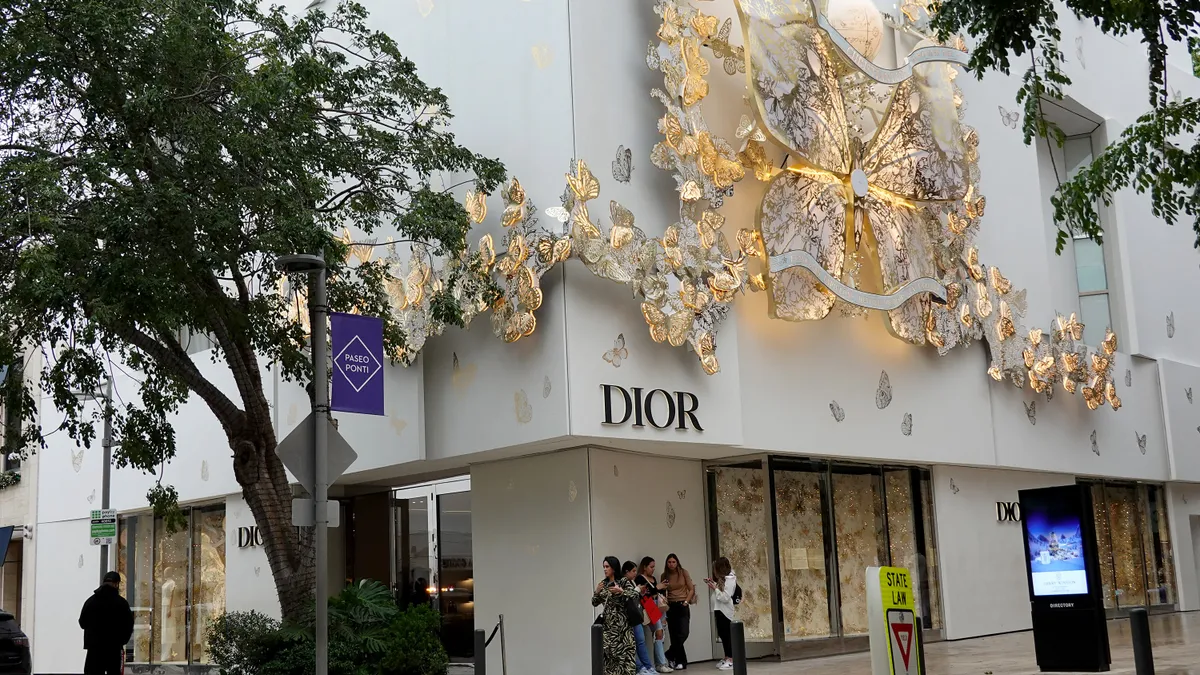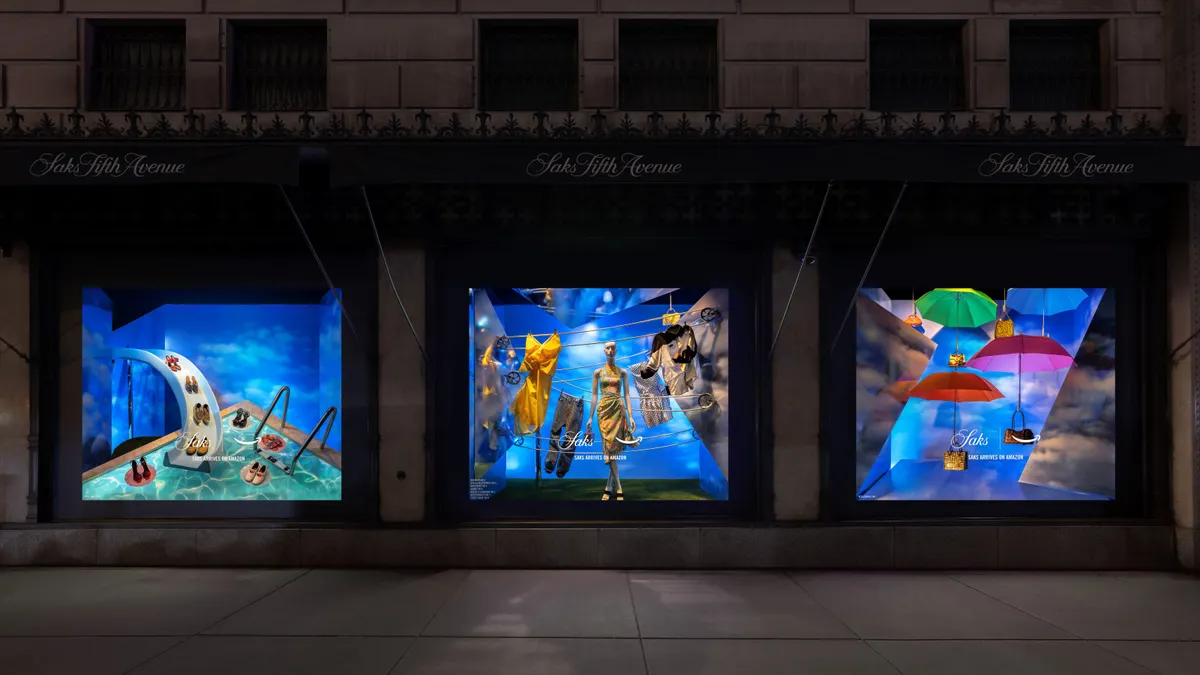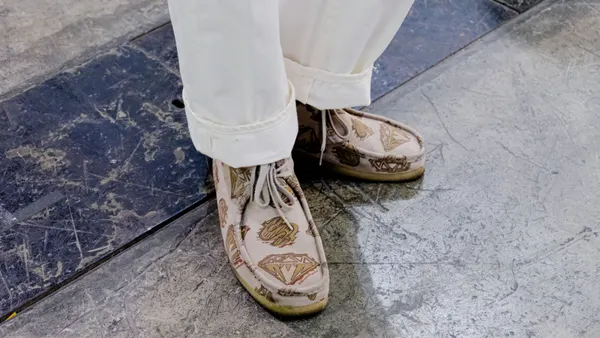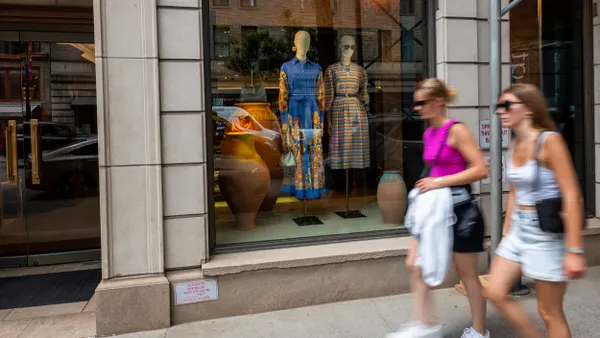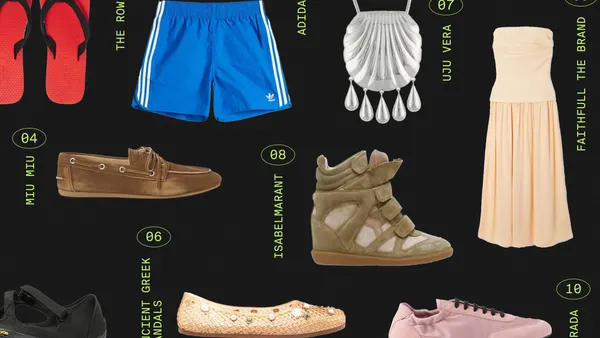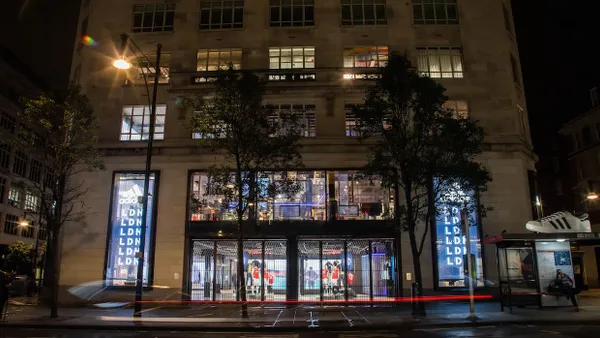Dive Brief:
- Fast fashion items are worn less, kept for less time and have a lower resale value than resold luxury items, according to a Monday report from luxury fashion reseller Vestiaire Collective.
- The report centers on a “cost-per-wear metric” for fast fashion and used luxury items, which Vestiaire determines by an item’s frequency of use, total life span and resale value. It argues that while fast fashion items “may appear more financially attractive,” used luxury items “are more a more financially-sound investment in the long term.”
- Last year, luxury fashion reseller Vestiaire banned brands from its platform that it considered fast fashion, including Abercrombie & Fitch, Gap, Old Navy and H&M, among others, based on their “negative environmental and social impact,” the company said at the time.
Dive Insight:
The findings were released in conjunction with Vestiaire’s annual circularity report, in which it promoted its recent environmental efforts, including adding more brands to its banned list.
To determine an item’s cost-per-wear, the report subtracted an item’s resale value from its initial price and divided it by the number of wears. The statistics used in the Vestiaire report are from 13,400 respondents across five markets in the U.S. and Europe.
The report found that the average resold luxury item is worn 88 times, which is 76% more than the average fast fashion item. These numbers skew higher in categories such as dresses and jackets. Used dresses are worn eight times more than fast fashion dresses, and used coats are worn four times more than fast fashion coats, per the report.
It similarly found that resold luxury t-shirts and shoes are both worn 30% more than fast fashion items in these categories, and preowned luxury bags are used 45% more than fast fashion bags.
“Not only are the hidden human and environmental costs [of fast fashion] enormous, but when you buy cheap, you buy twice,” the report stated. “With the low average cost of a fast fashion order, consumers are incentivized to choose quantity over quality and become trapped in a cycle of cheap prices, constant promotions, and rapidly changing trends — not to mention poor quality clothes that need replacing again and again.”
Based on its cost per wear metric, the report determined that a three-piece fast fashion outfit had cost-per-wear value of 9.65 euros, or about $10.26, while a used luxury outfit had a cost-per-wear value of 7.18 euros.
The report found that shopping for preowned luxury items is 33% more affordable than buying new fast fashion products.
“This allows for what we call the ‘upscale effect:’ meaning consumers buy better quality, pre-loved pieces at a comparable price — or even less — than they’d spend on fast fashion,” according to the report.
The U.S. secondhand apparel is on the rise and is expected to reach $73 billion by 2028, according to a March report from ThredUp. On average, U.S. consumers spent almost half of their 2023 clothing budget on secondhand items.
Secondhand luxury sales are also a way for aspirational customers to buy into the segment. A recent survey from McKinsey found that 63% of aspirational luxury customers bought at least one secondhand item out of five pieces purchased within the last six months.
Meanwhile, Vestiaire recently relaunched its vintage collection to include more than 250,000 items. At the time, the company said its vintage items sell 30% faster than non-vintage items.



